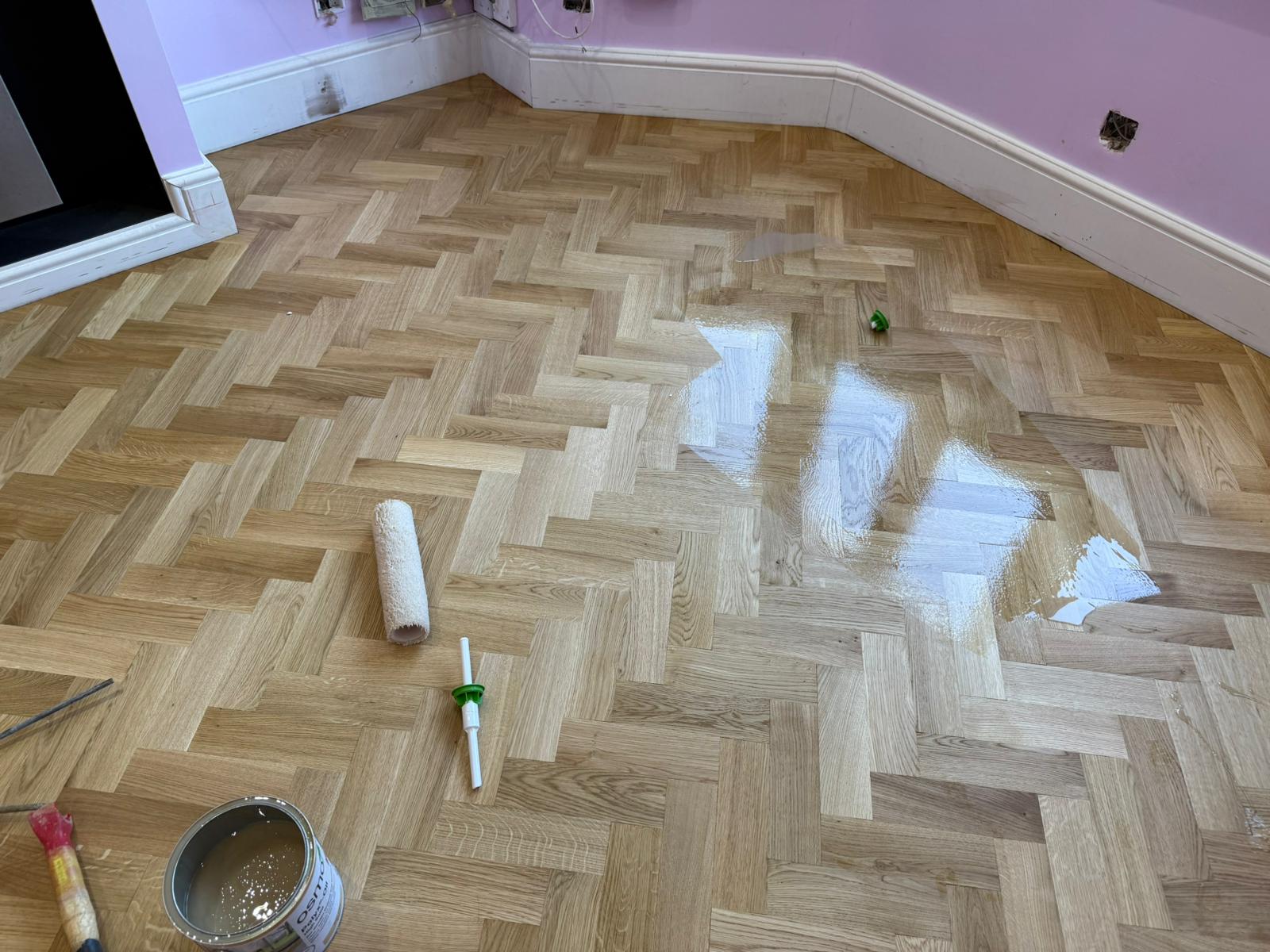When it comes to keeping real wood flooring looking its best, few processes are as important — or as misunderstood — as sanding and sealing. If you’ve heard the term before but aren’t entirely sure what it involves, this guide breaks it down in simple terms.
We’ll cover what sanding and sealing actually means, what floors it applies to, how it’s done, and why it’s so essential for both appearance and longevity. Whether you’re a homeowner, property manager, or involved in commercial refurbishments, understanding this process will help you protect your investment and get the best out of your flooring for years to come.
What Does “Sanding and Sealing” Mean?
Sanding and sealing is the process used to restore and protect real wood flooring. Over time, wooden floors naturally show signs of wear — scratches, dullness, scuffs, or small dents. Sanding removes the damaged surface layer, and sealing adds a protective finish that keeps the floor resilient against future wear.
In essence, it’s like giving your floor a deep refresh. Instead of replacing it, sanding and sealing renews what’s already there.
The process can dramatically transform a floor’s appearance — from tired and worn to smooth, bright, and clean — while also extending its lifespan by many years.
Which Floors Can Be Sanded and Sealed?
Not all floors are suitable for sanding and sealing. It’s specifically for solid wood and engineered wood flooring, because these are made with real wood on the surface.
- Solid Wood Flooring:
This is the most straightforward type to sand. Because it’s made from solid timber throughout, it can be sanded multiple times over its lifespan.
- Engineered Wood Flooring:
This has a real wood veneer over a plywood or composite base. It can also be sanded, but only a limited number of times — depending on the thickness of the top layer (usually 2–6mm).
However, laminate, LVT (Luxury Vinyl Tile), and vinyl floors cannot be sanded or sealed — they don’t contain a sand-able wood surface. In those cases, replacement or refurbishment with new materials is the better option.
Why Do Floors Need Sanding and Sealing?
Over the years, wooden floors naturally lose their shine. Daily wear from foot traffic, furniture movement, pets, and cleaning can gradually dull or scratch the surface. Even the best finishes wear down eventually.
Sanding and sealing serves two main purposes:
- Restoration:
Sanding removes the old, damaged surface layer, revealing fresh, untouched wood beneath. It’s like taking off years of wear in one process.
- Protection:
Sealing (also known as finishing) applies a protective coat to the bare wood. This prevents moisture absorption, reduces staining, and makes cleaning easier.
A well-sealed floor not only looks beautiful but also becomes more resistant to damage and longer lasting.
The Sanding and Sealing Process
Here’s what typically happens when a professional team (like Floors2U) carries out sanding and sealing:
- Preparation – The area is cleared of furniture, and the floor is checked for nails, gaps, or loose boards. These are repaired or filled before sanding begins.
- Sanding – Using professional sanding machines, the surface is gradually stripped back in multiple stages — starting with coarse grit to remove old finishes and moving to finer grits for a smooth finish.
- Detail Sanding – Edges, corners, and tight areas are sanded by hand or with smaller tools to ensure consistency.
- Cleaning – All dust is vacuumed and wiped away, leaving a completely clean surface ready for sealing.
- Sealing (Finishing) – A sealant or finish is applied to the sanded wood. Depending on the desired result, this can be a lacquer, oil, or hardwax oil.
- Drying and Curing – The floor is left to dry (usually a few hours between coats), and often two to three coats are applied for full protection.
Types of Floor Sealants
The choice of sealant affects both the look and durability of the finished floor. The three most common types are:
- Lacquer (or Varnish)
Creates a hard, protective surface with a subtle or glossy finish. It’s durable, water-resistant, and ideal for high-traffic areas like hallways and commercial spaces. Modern lacquers are water-based and low-odour, making them more eco-friendly than older solvent-based versions.
- Oil
Penetrates deep into the wood to enhance its natural colour and grain. Oiled finishes give a warm, matte appearance and can be spot-repaired easily. However, they may need more frequent maintenance compared to lacquer.
- Hardwax Oil
A hybrid of the two — it gives the natural look of oil with added surface protection similar to lacquer. It’s a popular choice for domestic and light commercial settings because it combines durability with a natural appearance.
How Often Should You Sand and Seal Your Floor?
The frequency depends on the type of wood, the amount of foot traffic, and the type of finish.
- In homes, sanding and sealing might only be needed every 7–10 years.
- In busy commercial areas, it could be required every 3–5 years.
Regular cleaning and using protective pads under furniture can help extend the time between treatments.
Signs Your Floor Might Need Sanding and Sealing
You can usually tell when your wood floor is due for a refresh. Look out for:
- A dull or patchy finish, especially in walkways or doorways
- Scratches or scuffs that don’t disappear with cleaning
- Water soaking in rather than beading on the surface
- Changes in colour tone or uneven patches
- Exposed raw wood in worn spots
If you notice several of these, your floor is ready for restoration.
Benefits of Sanding and Sealing
Done correctly, sanding and sealing delivers a number of long-term benefits:
- Restores appearance – Brings back the original colour and grain of the wood.
- Improves hygiene – Removes built-up dirt and bacteria trapped in old finishes.
- Protects investment – Adds years of life to expensive hardwood flooring.
- Increases property value – A well-maintained wood floor is a selling point.
- Customisable finish – You can choose the sheen level, tone, or oil type to match your décor.
In short, it’s one of the most effective ways to renew wood floors without the cost or waste of replacement.
Bringing it all together
Sanding and sealing isn’t just about making a floor look nice again — it’s a maintenance process that preserves the strength, appearance, and hygiene of real wood flooring. When done professionally, it can make even a decades-old floor look brand new.
Whether it’s a solid oak floor in a period home or engineered wood in a modern office, regular sanding and sealing ensures your flooring keeps its natural beauty and performs as it should for years to come.
If you have real wood floors that have lost their shine, it’s worth considering professional sanding and sealing rather than replacement — you’ll be surprised how much life is still left in your floor.



